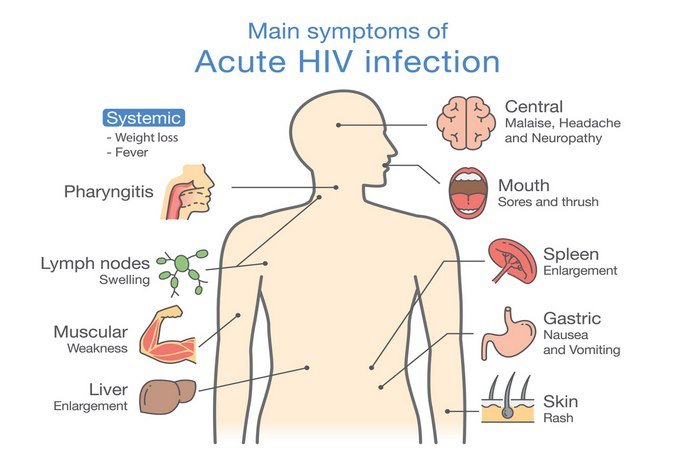Progression Of HIV Infection
The pathogenesis of HIV infection depends on the HIV replication and the immune responses of the patient through cell-mediated and immune-mediated reactions. HIV, directly and indirectly, mediates CD4+ T-cell destruction involving different processes that result in weak and impair immune systems vulnerable to opportunistic infections.
HIV pathogenesis involves three stages:
1st. Acute HIV Infection
In this stage, the Virus gets to enter into the human body via transmission and targets the Langerhans cells first, according to medical studies. As it is the earliest stage, so it takes 4-14 days for the virus to spread across the whole body. The virus during this duration diffused into most of the nucleic materials and establish itself in the cells throughout the body, and thus make it difficult to tackle. In this stage, HIV weakens the immune system response by depleting the number of CD4+ T defensive cells and almost becomes dominant over the immune system in this phase. The stage usually takes weeks and may show certain signs such as fever, flu-like symptoms, rash, and lymphadenopathy. In this phase the number of increased, which greatly increases the risk of HIV transmission. Treatment intervention in this stage will arrest the growth and spread of HIV. Antiretroviral therapy at this stage can be useful to eradicate HIV.

